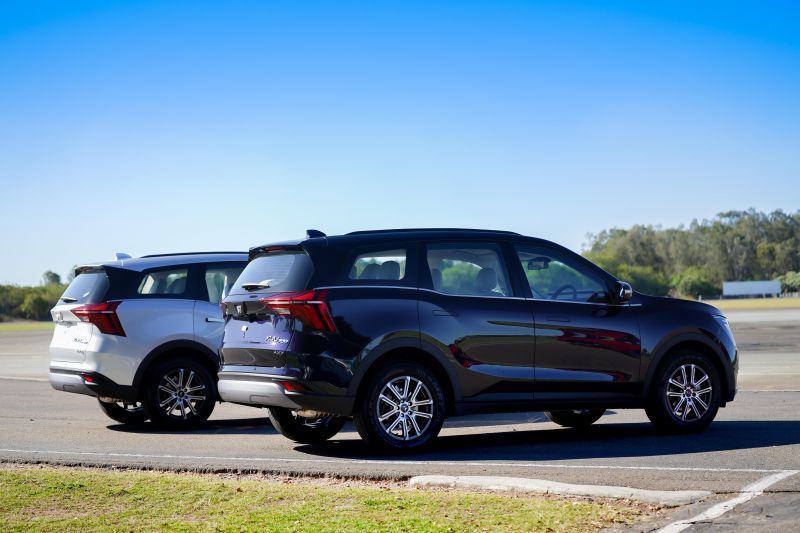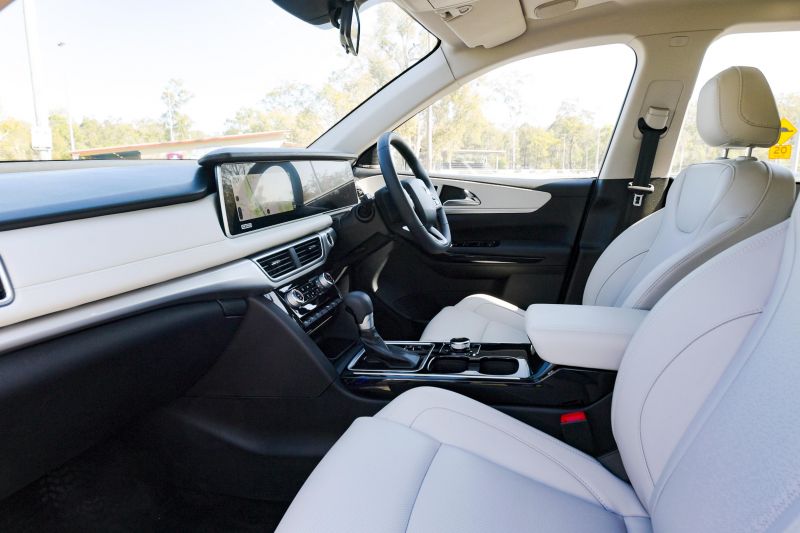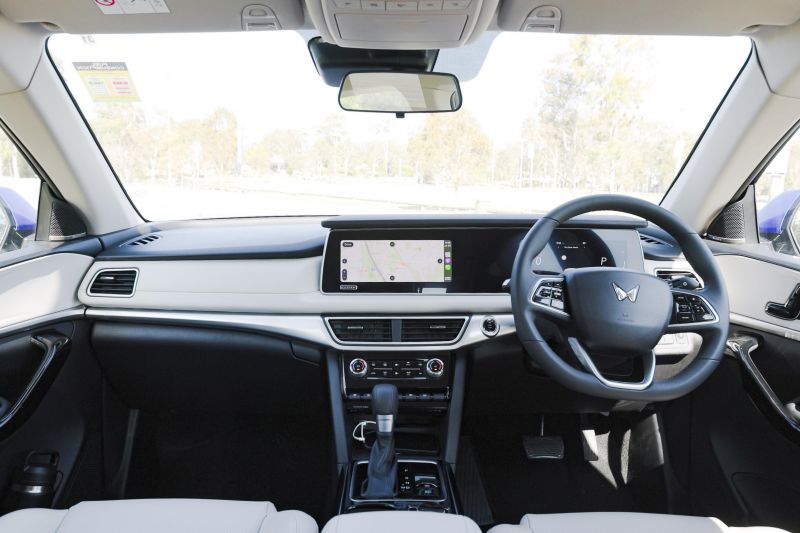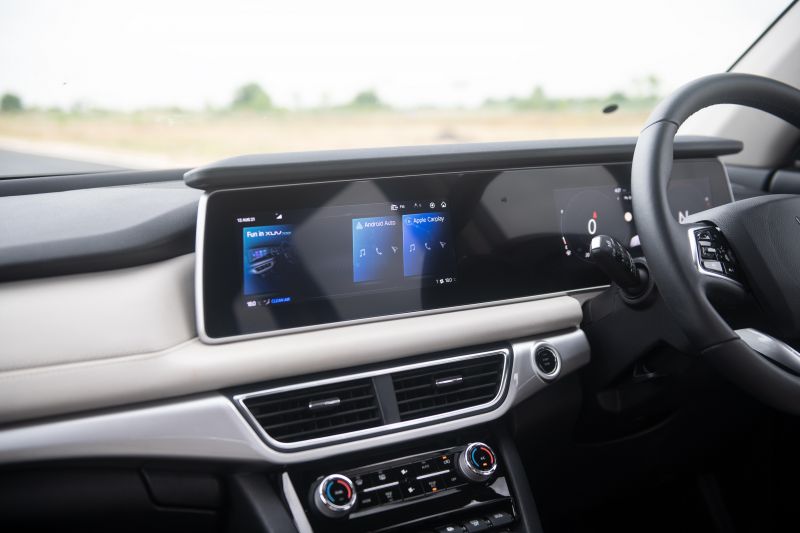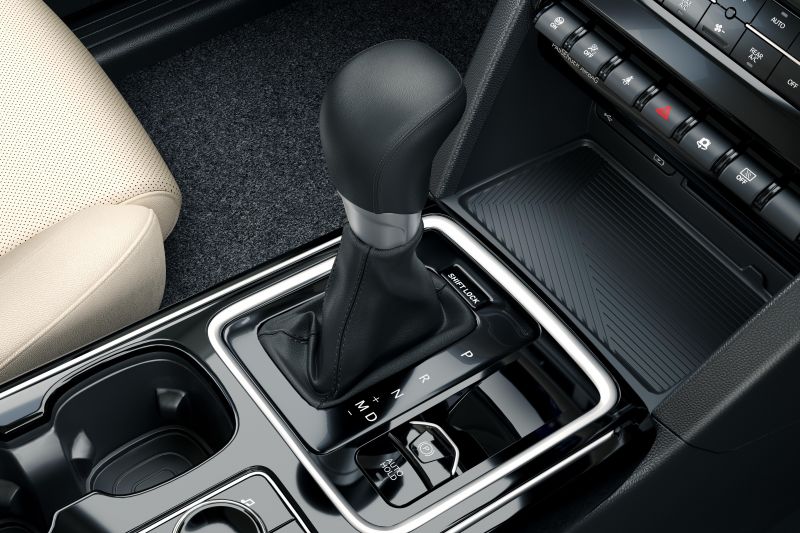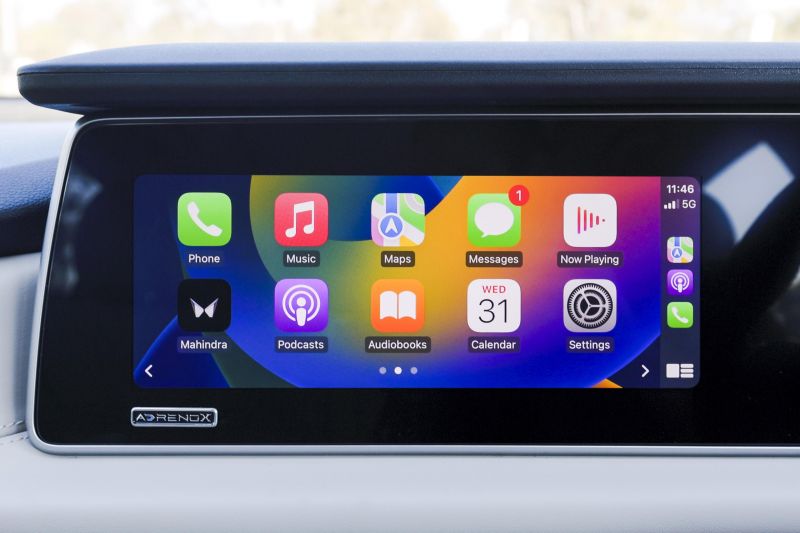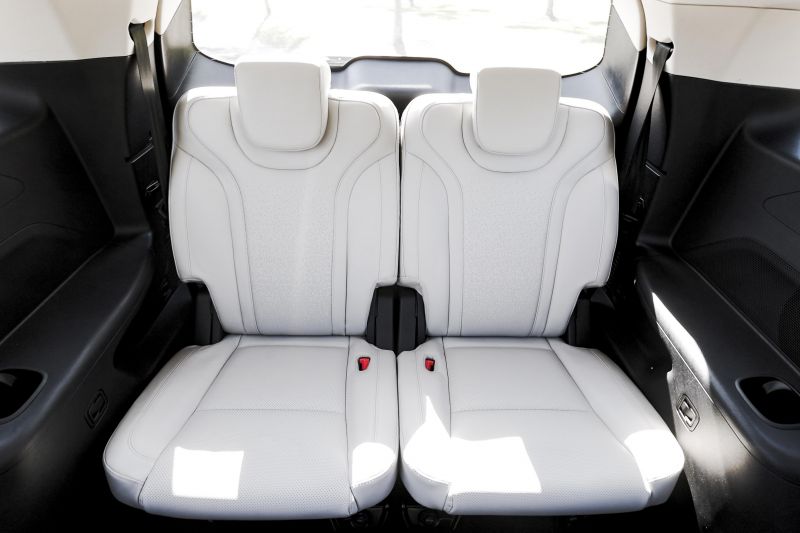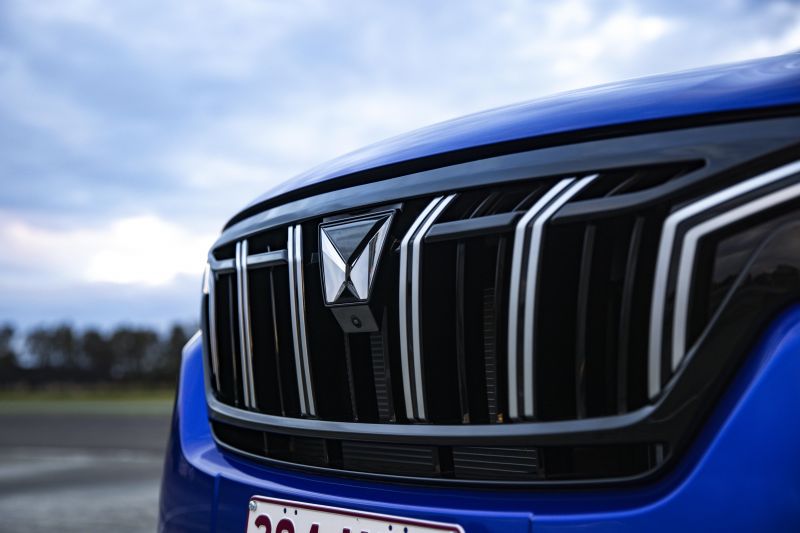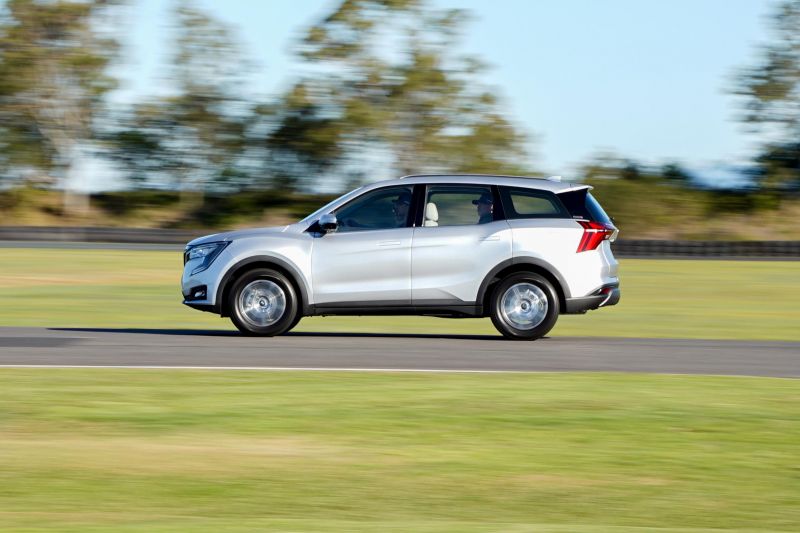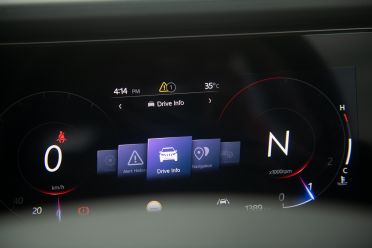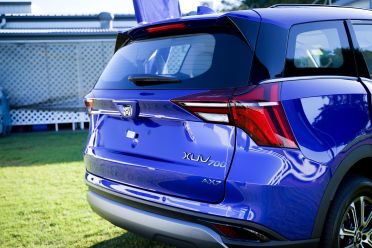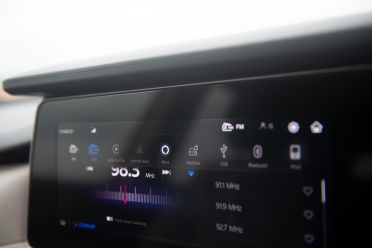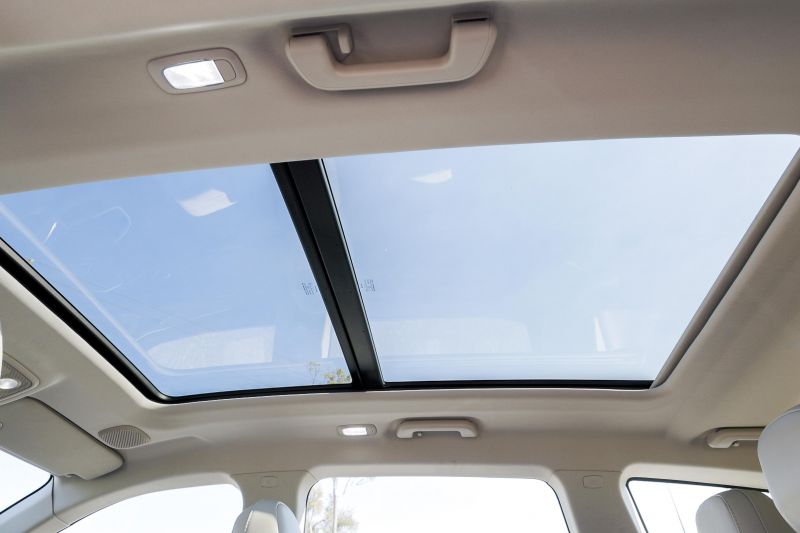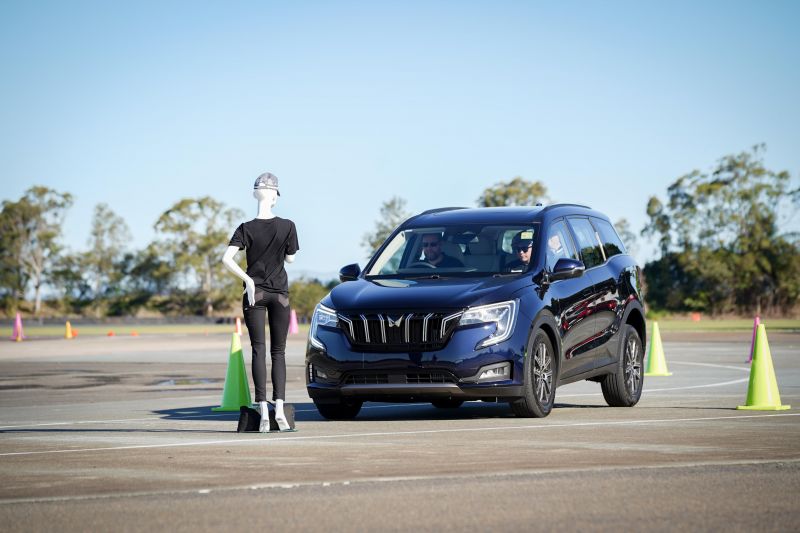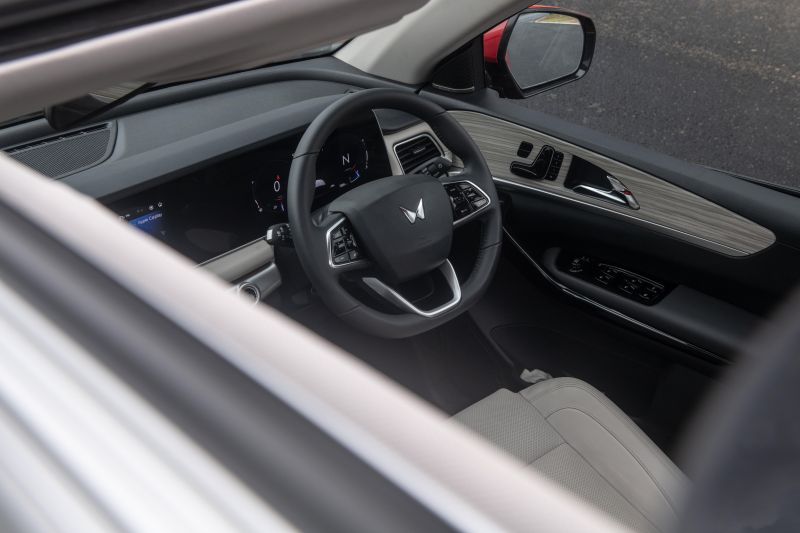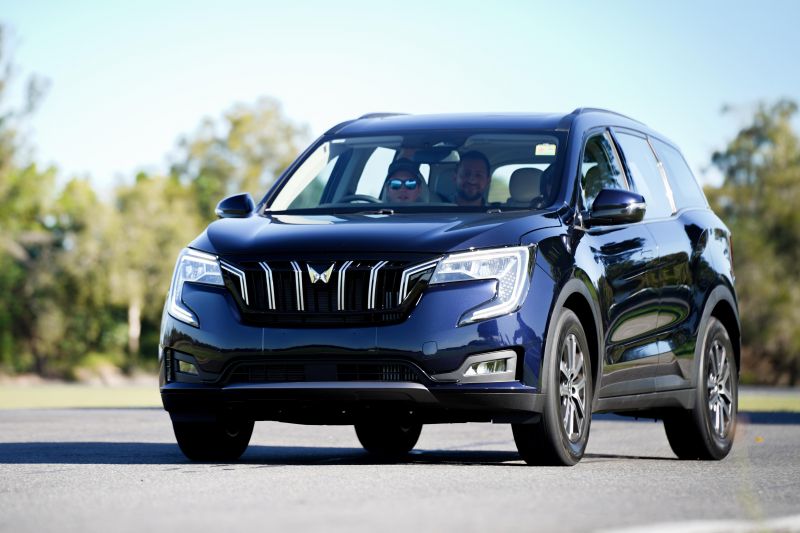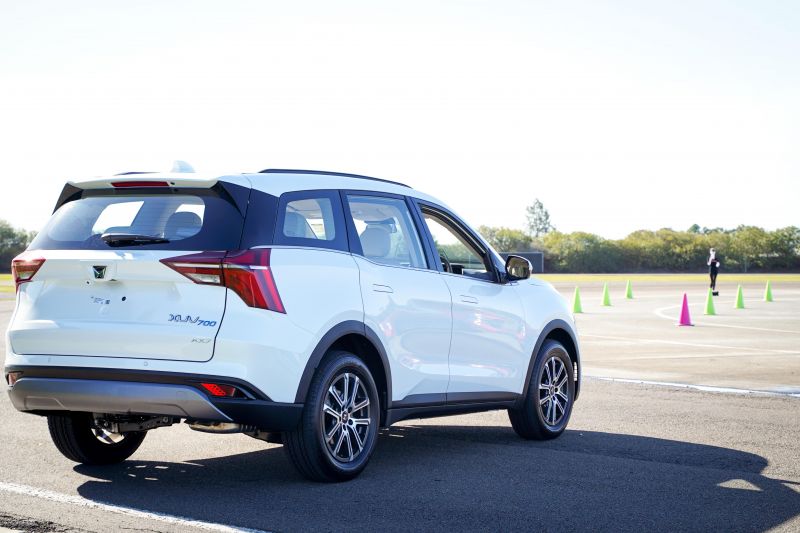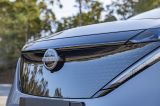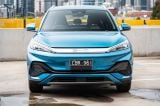Mahindra – best known for its rugged, rural-focused Pik-Up – is getting serious about appealing to buyers in urban areas.
It’ll use the XUV700, a unibody SUV rivalling the Mitsubishi Outlander, to help lure suburban buyers to its growing dealership network. The similarly sized body-on-frame Scorpio, in contrast, will likely appeal more to those in regional areas.
The name is pronounced XUV-seven-double-oh – you pronounce the double-oh like the Reading and Writing Hotline number, or James Bond’s codename. Though in this case, being 700 and not 007, the Mahindra is more like “James, Bond James”.
The XUV700 is a handsome thing. Yes, those LED daytime running lights are very Renault Koleos and its door handles are Tesla-esque, so it’s not the most original design. But the XUV500 it replaces was certainly original, and not for the better.
Mahindra has therefore dropped the loud shirts and white belt-and-shoes combo for a more conservative, elegant suit, while it has also upped its game on the technology front with a range of active safety features – important additions in such a family-focused segment, and one where almost every SUV has a long list of safety kit.
After getting to experience the XUV700 in India earlier this year, this was our first opportunity to drive it – however briefly – on local roads. How does it stack up?
How much does the Mahindra XUV700 cost?
The XUV700 is sharply priced, though Mahindra has announced only introductory pricing.
Until August 31, 2023, the base AX7 is priced from $36,990 drive-away, while the AX7L is priced from $39,990 drive-away. There’s no extra charge for metallic paint.
The company wouldn’t comment on what pricing will look like from September.
That introductory pricing sees it undercut even the most affordable seven-seat versions of key rivals, like the Mitsubishi Outlander LS ($39,490), Honda CR-V VTi 7 ($40,990 drive-away), Mazda CX-8 G25 Sport ($42,060) and Nissan X-Trail ST AWD ($39,790).
It also means that, for the time being, the XUV700 is the cheapest seven-seater in Australia even though it’s considerably more expensive than the old XUV500. Even the Chinese LDV D90 opens at $38,990 drive-away.
For reference, the old XUV500 opened at $27,990 drive-away, with the top-spec front-wheel drive model costing $31,990 drive-away. There’s a lot more kit in the new car, however.
What is the Mahindra XUV700 like on the inside?
The XUV700 has plenty of showroom appeal, with its standard dual 10.25-inch screens, wood-look door trim, panoramic glass sunroof and off-white leatherette upholstery on both variants.
While the off-white upholstery looks nice, we question whether it’s a wise choice for a family-focused seven-seater. Mahindra says, however, it may bring a black interior to Australia.
The combination of panoramic roof and off-white trim gives the cabin a modern, airy appearance. Off-white trim extends across the dashboard and on the doors, helping break up vast expanses of what appears to be sturdy but ultimately ute-grade hard plastic trim.
Look beyond the dazzle of the pale trim and the XUV700 can’t match the likes of an Outlander or even MG HS in perceived quality – we would have argued the XUV700 has a more simple, rugged feel inside, were it not for the impractical lashings of seemingly stain-attracting trim.
There’s also a sea of gloss black trim on the centre console, which is bound to attract scratches, smudges and dust. Mahindra is far from alone in employing this questionable material, but it’s one of the few we’ve seen that dares to put gloss black trim on the door pulls.
Where it edges past the likes of the MG HS and GWM Haval H6 is in usability. There’s a row of rocker switches like in those Chinese SUVs, but these accompany actual physical climate controls which are simple and easy to use.
Mahindra may be happily showing off its more high-tech details, but it’s not burying key functions in a touchscreen in the pursuit of a minimalist cabin.
At the base of the centre stack, you’ll find a pair of USB-A outlets and, in the AX7L, a wireless charging pad.
Mahindra has also included a rotary dial controller for the infotainment system with some shortcut hard buttons, à la Mazda.
The infotainment system is somewhat unusual. There’s a home menu with shortcut tiles for Android Auto, Apple CarPlay, Fun in XUV700 and Fun with XUV700, plus settings and home shortcuts in the top right-hand corner of the screen.
Fun with XUV700 takes you to a power readout. Umm, ok. Fun in XUV700 takes you to… wait, what? Another home menu. This time, the ‘fun’ tiles are replaced with a clock and a media information tile.
These quirks aside, the response times are snappy, the settings menu has a straightforward layout, and the smartphone mirroring is wireless.
There’s no factory satellite navigation, despite a navigation menu option appearing on the digital instrument cluster.
The cluster offers different display views, intuitive menus, and fairly attractive graphics.
The driver’s seat is relatively comfortable and has power adjustment, controllable via Mercedes-Benz-like controls on the driver’s door. However, the passenger seat feels oddly high and lacks height adjustment. Unusually, you need to step up to the AX7L to get telescopic steering column adjustment.
Step into the rear, and there’s ample room in every direction. The floor is also quite flat, while the panoramic sunroof doesn’t eat into headroom like some SUVs.
In terms of second-row amenities, there are air vents and a single USB-C port.
I’m 180cm tall and I was able to sit in the third row without my head touching the roof, and my knees weren’t completely pressed against the seatbacks. Nevertheless, these are seats intended more for children – no different to an Outlander, CR-V or X-Trail, then.
Third-row occupants can make an easy getaway, with a simple pull of a lever on the second-row seatbacks tumbling the seat forward in one movement.
Passengers do get a decent array of amenities back here, too. There are air vents and a cupholder on each side, while the driver’s side gets fan speed controls and a 12V outlet.
With the third row up, you can forget about fitting a suitcase back here. You’d be hard-pressed to fit two full grocery bags.
Mahindra hasn’t quoted a boot capacity figure, though the XUV500 it replaces had a claimed 702L behind the second row and this rides a 50mm longer wheelbase. Yes, we realise that sounds like a school maths problem, and we’ll update this review should figures become available.
What’s under the bonnet?
All Australian-market XUV700s are powered by a 2.0-litre turbocharged four-cylinder petrol engine producing 149kW at 5000rpm and 380Nm between 1750 and 3000rpm.
It’s mated with a six-speed automatic transmission sourced from Aisin. All models are front-wheel drive.
Those outputs compare favourably with its mostly naturally-aspirated competition. The Outlander pumps out 135kW/244Nm, the CX-8 140kW/252Nm, and the X-Trail 135kW/244Nm. The CR-V also features a turbocharged four-cylinder engine, but it’s a smaller displacement one and therefore the XUV700 still shades its 140kW/240Nm outputs.
Mahindra offers a 2.2-litre turbo-diesel engine and all-wheel drive in India, and the company says this drivetrain is in the plans for Australia.
The petrol-powered XUV700 uses 8.3L/100km on the combined cycle. That’s slightly more than the Outlander (7.7L/100km), CX-8 (8.1L/100km), X-Trail (7.8L/100km) and CR-V (7.3L/100km), but it has more power and torque than any of them.
The XUV700 runs on 91 RON regular unleaded fuel and has a 60L fuel tank.
How does the Mahindra XUV700 drive?
Our drive of the XUV700 was limited, with a mix of on-road and track driving.
No, we weren’t trying to set times in the Mahindra at the Norwell Motorplex, but instead testing its electronic stability control on the skid pan, the pedestrian detecting abilities of its autonomous emergency braking system, and the effectiveness of its adaptive cruise control.
Mahindra executives appeared proud to have a vehicle on sale with AEB and adaptive cruise – and indeed both of those systems worked well – but let’s not remind them cars have offered this equipment for over a decade now.
When we weren’t threatening mannequins with vehicular homicide, we were tootling along the fairly smooth roads of suburbs like Ormeau. This unfortunately didn’t give us much of a chance to verify Mahindra’s claims of a smooth ride, courtesy of passive suspension with frequency selective damping.
Nevertheless, the vehicle wasn’t upset by any of the mostly smooth surfaces we drove it along, so there’s that.
The powertrain is responsive and the automatic transmission shifts smoothly, though the turbocharged engine has a slightly gritty note. The XUV700 proves fairly quiet at highway speeds, however.
Where the XUV700 disappoints is in its steering. It’s overly light which, while making the car a breeze to park, saps any sense of involvement from the vehicle.
We applaud the inclusion of a Hyundai-style blind-spot view monitor, though it doesn’t have the best frame rate and there’s no blind-spot monitoring system to go with it. The XUV700 also misses out on rear cross-traffic alert, so while it’s a huge leap over the XUV500 it’s not quite up there with the best in this segment.
A surround-view camera is standard on the AX7L, however, which you have to step up to the highest reaches of rivals’ model ranges to get. The resolution is average, but we’ve certainly seen worse.
One strange note: the indicators make a peculiar noise. They sound more like a child’s xylophone than any indicator we’ve ever heard.
What do you get?
Badging aside, the AX7 and AX7L are virtually indistinguishable from each other from the outside.
XUV700 AX7 highlights:
- 18-inch alloy wheels
- Panoramic sunroof
- Automatic LED headlights
- Automatic high-beam
- Cornering lights
- Fog lights
- Rain-sensing wipers
- Tyre pressure monitoring
- Power-folding exterior mirrors
- Electric park brake with auto-hold
- 10.25-inch touchscreen infotainment system
- 10.25-inch digital instrument cluster
- Apple CarPlay, Android Auto
- 6-speaker sound system
- Leather-wrapped steering wheel and shifter
- Leatherette upholstery
- 6-way power driver’s seat with memory
- One-touch tumbling 60:40 second-row seats
- Dual-zone climate control
- Keyless start
XUV700 AX7L adds:
- 12-speaker sound system
- Electronic park brake
- Telescopic steering wheel adjustment
- Illuminated vanity mirrors
- Electric ‘smart’ door handles
- Wireless phone charger
There are some notable omissions. For example, there are no heated seats, nor is there factory satellite navigation.
Is the Mahindra XUV700 safe?
The XUV700 has yet to be assessed by ANCAP.
“Currently, we are talking to the senior people at ANCAP, trying to understand all the regulatory requirements that we would need to meet,” said Mahindra’s automotive boss Veejay Nakra.
The following safety equipment is standard:
- AEB with Pedestrian detection
- Adaptive cruise control
- Smart Pilot Assist
- Lane-keep assist
- Traffic sign recognition
- Reversing camera
- Post-collision braking
- Front, front-side and curtain airbags (6)
The curtain airbags extend to the third row.
XUV700 AX7L gains:
- Blind-spot view monitor
- Surround-view cameras
- Knee airbag
- Adaptive cruise control with stop/go
No models offer blind-spot monitoring and rear cross-traffic alert.
How much does the Mahindra XUV700 cost to run?
The Mahindra XUV700 is backed by a seven-year, 150,000km warranty with seven years of roadside assist.
Servicing is required every 12 months or 10,000km – a little shorter than the norm these days.
Capped-price servicing information has yet to be announced.
CarExpert’s Take on the Mahindra XUV700
If consumers are willing to take a punt on upstart Chinese brands, we see no reason why Mahindra shouldn’t also enter the consideration list.
None of the Chinese brands have bothered to field a mid-sized three-row crossover either, so the Mahindra is the only such model to undercut the established Outlander/X-Trail/CR-V seven-seat trio thanks to its sharp introductory pricing.
The kit list is long, despite a handful of unexpected omissions, and there’s more safety equipment available than any Mahindra ever. That helps explain the considerable price increase over the XUV500, though notably it’s still Australia’s cheapest seven-seater.
While our drive was limited, the XUV700 offers a smooth, pleasant if largely unmemorable driving experience. We’ll have to wait until we have more time with the vehicle to see how it fares on rougher roads and stop/start driving.
We don’t need to spend much time with the XUV700 to know an off-white interior in a family-focused car isn’t a wise idea.
Some of the materials could also be better, but at this price point something has to give, and to the Mahindra’s credit it feels well screwed together.
With a third row that boasts curtain airbag coverage and plenty of room for kids, and a price tag a few thousand less than a comparable Japanese rival, we could see a lot of people considering the XUV700.
That is, if Mahindra can get the word out about itself. Time will tell.
Click the images for the full gallery

